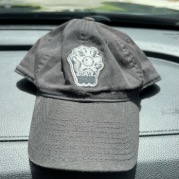This is a cross-post from another discussion board, but I think it has merit here:
Getting back to shooting has been rough and I've noticed that I've developed a bit of a flinch...
To combat that, in the past, I've used a Rogers staggered ball-and-dummy drill (Search this forum for a post about it...) to fix. I want to push beyond a largely static drill and do something more to engrain shit into my psyche not to flinch.
So... We've started practicing a lot with snap caps mixed in. Lots of snap caps. The idea is that once you notice you have a flinch, you complete your drill (a stage-let) and then immediately work through a Rogers staggered magazine (~5 live shots). You're looking for the flinch to be minimized, almost eliminated. Planning to work this into my standard practices over the winter.
Questions:
1.) Does anyone use this or a similar approach in their training? Did it help?
2.) I think the pre-ignition push/flinch is a ruin of accuracy. I think seasoned shooters have better "timing", but that it is unpredictable and goes agains the whole "press the trigger straight back without disturbing the sights". What say you? Do you have evidence to the contrary?
3.) I'm curious what some of the precision shooters might have to say about this... Do you guys try to get rid of the flinch?




 Reply With Quote
Reply With Quote





 ) and since I know what the gun, the load and myself can do it is very easy to recognize when I'm the cause of those ""Unwanted Gun Movements" at moment of firing.
) and since I know what the gun, the load and myself can do it is very easy to recognize when I'm the cause of those ""Unwanted Gun Movements" at moment of firing.


